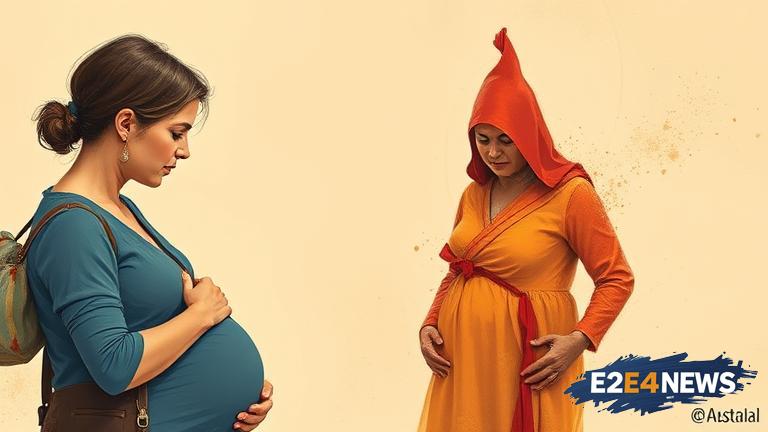Australia’s birth rate has hit a record low, with the country’s total fertility rate (TFR) declining to 1.66 children per woman, the lowest level ever recorded. This decline is attributed to various factors, including the increasing age of mothers, with the average age of first-time mothers rising to 28.5 years. The data also shows that the proportion of mothers aged 30-34 years has increased significantly, accounting for 30.4% of all births. Furthermore, the proportion of mothers aged 35-39 years has also increased, making up 23.1% of all births. The rise in mothers’ age can be attributed to various factors, including increased participation in the workforce, higher education, and delayed marriage. Additionally, the cost of living and housing affordability are also contributing factors, as many women are delaying childbirth until they are more financially stable. The decline in birth rate is also attributed to the decreasing number of teenage pregnancies, which has fallen to a record low. The data also shows that the birth rate varies significantly across different regions, with some areas experiencing a higher birth rate than others. The Australian Bureau of Statistics (ABS) has reported that the birth rate in New South Wales is the lowest, with a TFR of 1.63 children per woman. In contrast, the Northern Territory has the highest birth rate, with a TFR of 2.03 children per woman. The decline in birth rate has significant implications for the country’s population growth and aging population. The ABS has predicted that the population will continue to age, with the proportion of people aged 65 and over expected to increase to 22.5% by 2034. The government has introduced various policies to encourage families to have more children, including the introduction of paid parental leave and childcare subsidies. However, these policies have had limited success, and the birth rate continues to decline. The decline in birth rate is also having a significant impact on the country’s workforce, with a shortage of skilled workers expected in the coming years. The government is encouraging immigration to address the shortage, but this is not a long-term solution. The decline in birth rate is a complex issue, and there is no single solution. The government, businesses, and individuals must work together to address the underlying factors contributing to the decline. This includes increasing support for families, improving work-life balance, and providing affordable childcare and housing. The ABS has reported that the birth rate is expected to continue to decline, with the TFR predicted to fall to 1.59 children per woman by 2025. The decline in birth rate is a significant issue that requires urgent attention, and the government must take a comprehensive approach to address the underlying factors contributing to the decline. The data also shows that the birth rate varies significantly across different cultural and socioeconomic groups, with some groups experiencing a higher birth rate than others. The ABS has reported that the birth rate for Indigenous Australians is significantly higher than the national average, with a TFR of 2.35 children per woman. In contrast, the birth rate for women from non-English speaking backgrounds is lower than the national average, with a TFR of 1.45 children per woman. The decline in birth rate is a complex issue that requires a comprehensive approach, taking into account the various factors contributing to the decline. The government must work with businesses, individuals, and communities to address the underlying factors and provide support for families to have more children.
